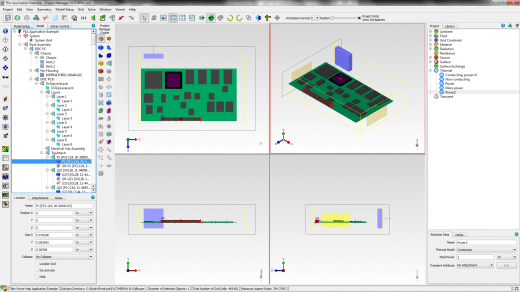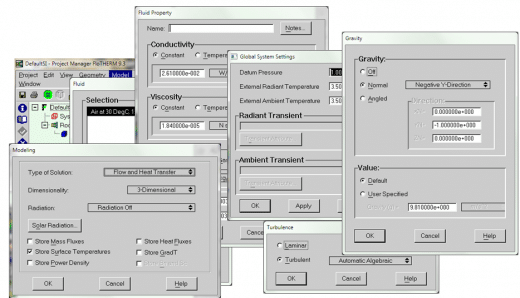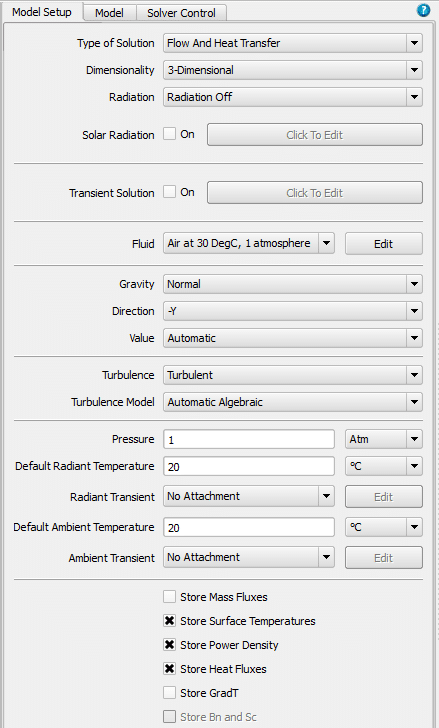FloTHERM V10 is a major release that marks 25 years as the leading electronics thermal simulation tool. This series will introduce the top 10 features that we’ve delivered, hopefully giving some insights not just on the features themselves, but also on the background as to how and why we’ve developed them. To start with let’s look at the most obvious change, a new graphical user interface (GUI).
The GUI toolkit used for the development of FloTHERM V2 15 years ago was selected to provide cross platform support for the range of operating systems in use at that time. These were dominated by UNIX, including IRIX, Solaris, AIX, HP-UX but also included Microsoft Windows, which at the time was growing quickly in popularity in the engineering community. The GUI was certainly an improvement on that used for V1 and has stood the test of time well in the intervening years. However, the last decade has seen a rapid adoption of Windows at the expense of UNIX, the previous version of FloTHERM, V9, was itself only supported on Windows with the solver back-end (non-GUI) supported only on Linux.
To capitalise on this mass adoption of Windows we have embarked on a GUI replacement program for FloTHERM to provide a much more Windows compliant user experience. The first stage in the GUI update program sees the reimplementation of our main pre-processing windows, the Project Manager and Drawing Board.
There are many FloTHERM ‘black belts’ out there who have used FloTHERM heavily for many years, we knew it was important to ensure that the workflows that they had established were not compromised. Regardless of what we believed to be the attractive features in V10 we were acutely aware that we should not provide an update that required extensive re-training. As such, and as far as possible, we’ve retained the fundamental paradigms on which FloTHERM usage is based. Project node tree, node tree manipulation, project attributes, the concept of attribute attachment to objects etc. all such concepts remain unchanged.
One of the often reported failings of previous versions of FloTHERM was the extensive use of dialogs. To cure this we have now adopted a property sheet approach whereby on selection of an object, instead of popping up a dilaog, all pertinent information is shown in the main GUI window itself.
This is especially useful when it comes to Model Setup data; whether the model should consider just the flow only, what turbulence settings to use, ambient conditions outside the solution domain, what fluid is used etc. etc. In V9 a whole plethora of dialogs had to be accessed both to set and view the data.
V10 sees all Model Setup data gathered and presented on its own tab allowing for ease of inspection and editing. Similarly for the Solver Control settings as well.
Another advantage of a property sheet approach is how applying to data to multiply selected objects is handled. When multiple objects are selected the property sheet shows all data items that are common between the selected objects, and data values that are the same are shown, if different then blank. At this stage a change made to this combined property sheet is applied to all objects.
Finally, as seen in the multiple apply image, the GUI toolkit used in V10 has given us the opportunity to provide localized versions of FloTHERM. For V10 we now support Japanese in this pre-processing part of FloTHERM.
From a GUI perspective FloTHERM has now embarked on its 3rd generation. The effectiveness in dealing with massive models has been substantially enhanced as a consequence, better preparing FloTHERM to handle the industrial strength models that its underlying technology is so appropriate for, for today and into the future!
14th February 2014, (a very wet) Ross-on-Wye








